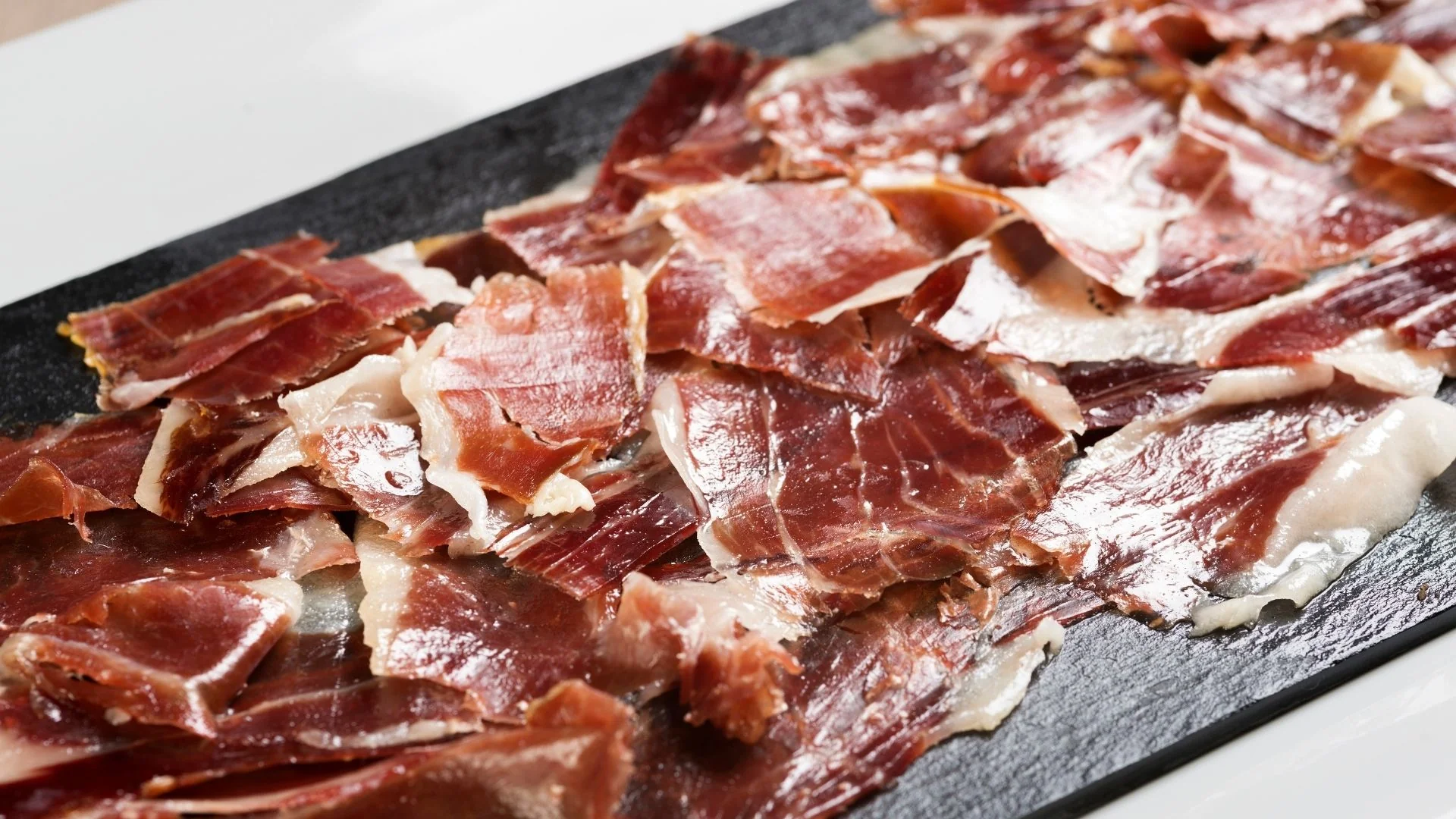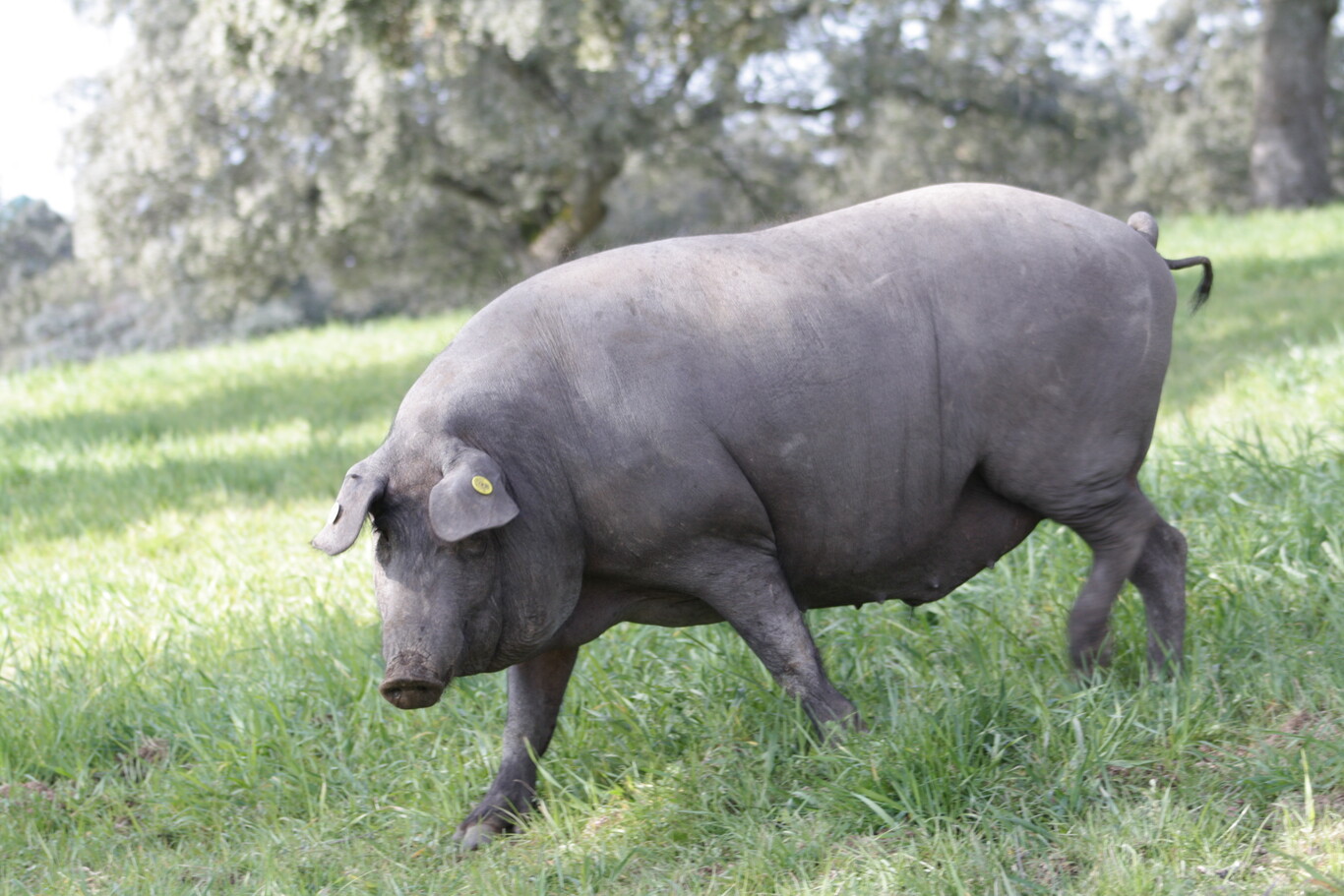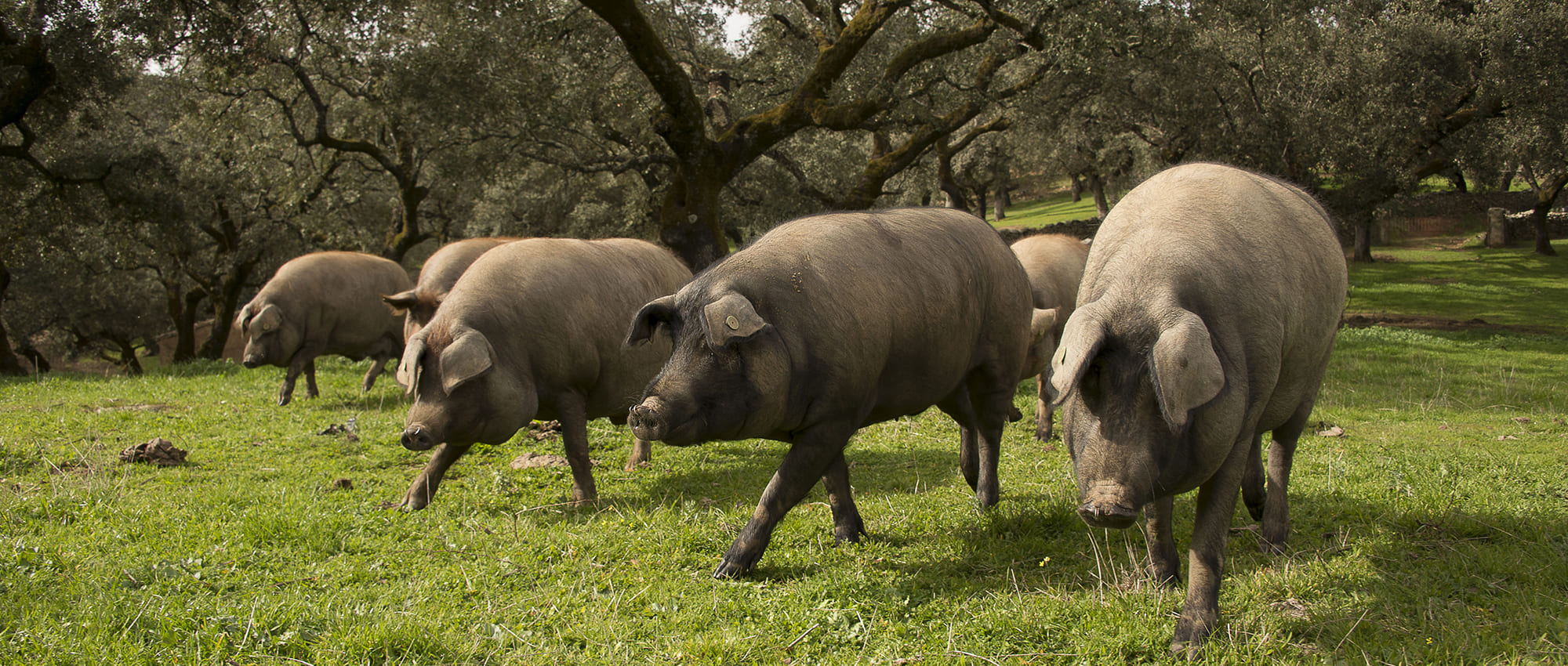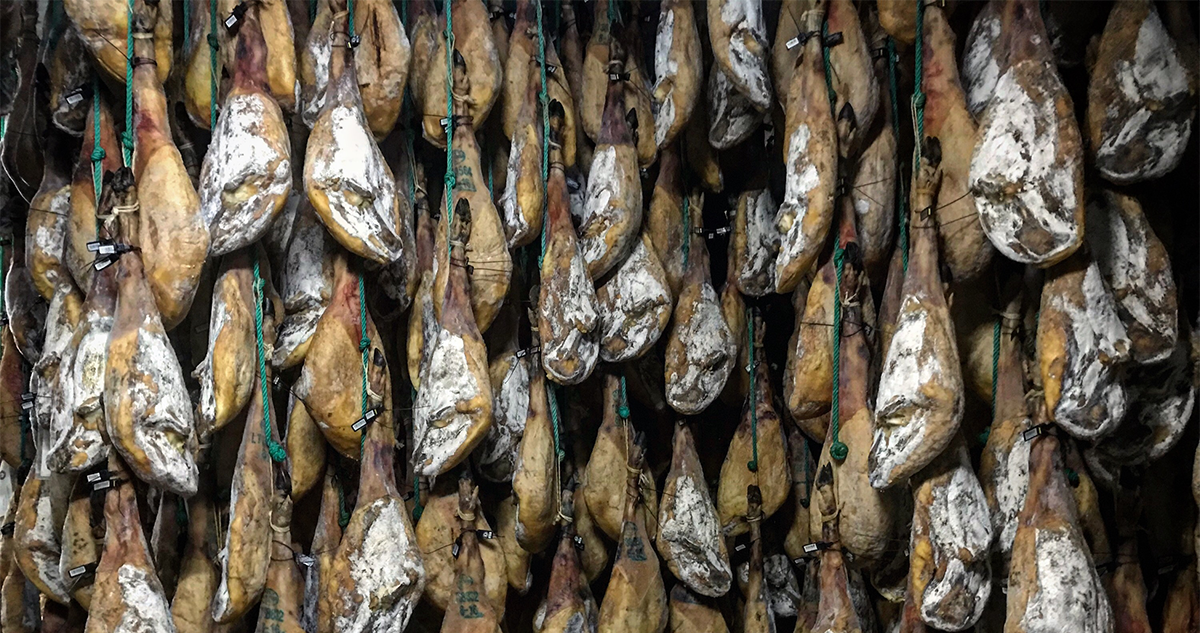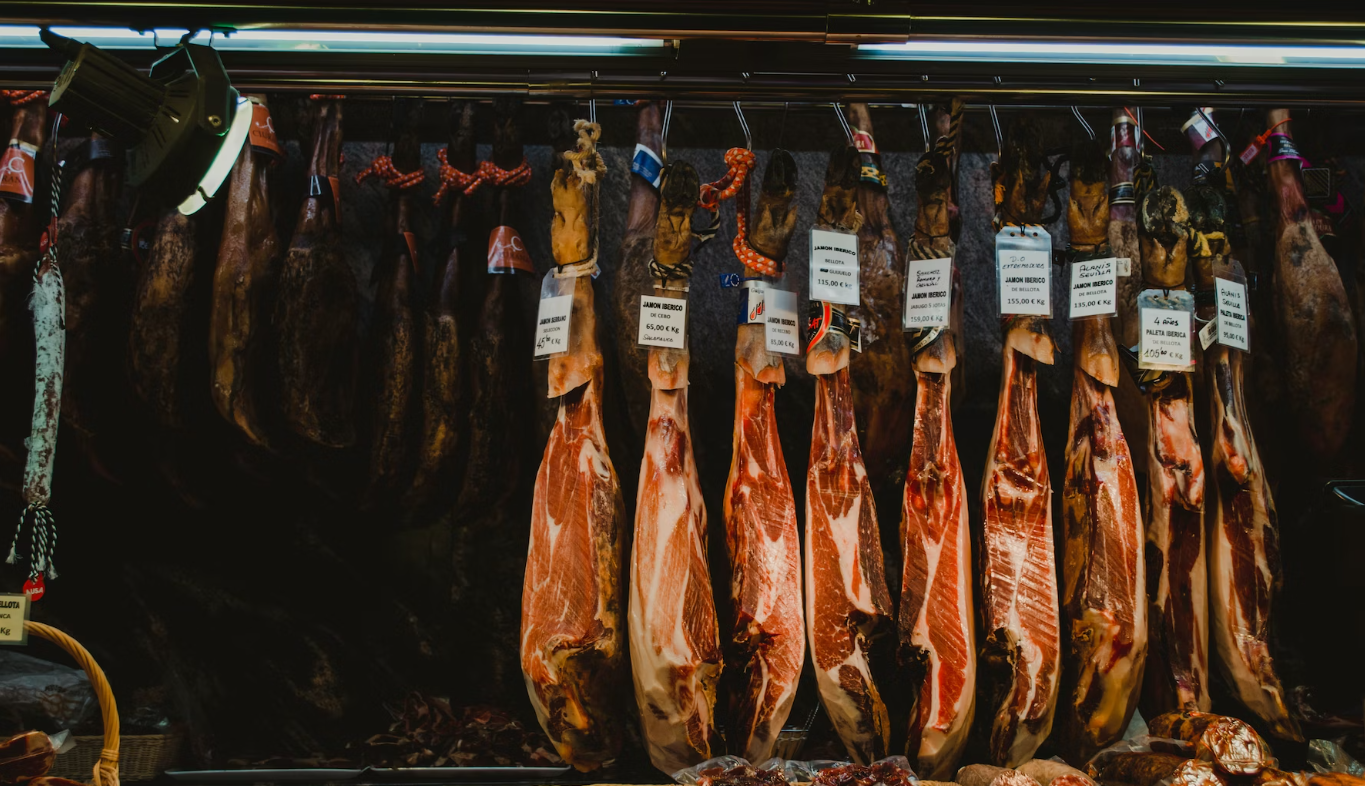
There are those who claim that the Iberian hams are easily distinguishable at first glance. We are not so clear about it, since a high-quality serrano ham premium It can have an external appearance very similar to that of an Iberian ham. In addition, there are some breeds of Central European pigs that share many morphological characteristics with our Iberian variant, which makes differentiation even more difficult naked eye.
And, if this were not enough, We should not trust the color of the hooves either.: There are specimens of Iberian pigs that do not have dark hooves and there are also common breed pigs that have blackish hooves.
With all this on the table, we encourage you to continue reading to learn what you should look for to recognize an Iberian ham in the delicatessen or supermarket, and how to do it when it has already been sliced on a table.
Types of Iberian ham and Serrano ham
Before starting, let's clarify what types of ham we can find in stores and supermarkets:
- Iberian acorn-fed ham: The hams come from Iberian pigs that are raised freely in the pastures. The diet of these animals is 100% natural and includes roots, herbs, fruits, berries and, of course, acorns.
- Iberian cebo de campo ham (also called recebo): They are legs of Iberian pigs raised in a partial freedom regime. The diet includes a period based on vegetables and acorns and another based on selected natural feed.
- Iberian bait Ham: The ham comes from the same breed. The big difference is that, although they are raised in partial freedom, their majority diet consists of highly selected natural feed.
- Serrano ham: The pork comes from one of the many varieties of common pig. They are usually fed feed, although their diet may also include cereals. Before being marketed, the pork must be cured for a minimum period of 10 months.
- Serrano ham reserve: It is distinguished from the previous one because its healing period is 12-15 months.
- Gran Reserva Serrano Ham: In this case, the serrano ham leg must be cured for more than 15 months.
How to distinguish Iberian ham and Serrano ham in shops and supermarkets
Well, neither because of its external appearance nor because of the color of the hoof. The only reliable clue could be its aroma: the aromas of Iberian ham are sweeter and more penetrating than those of Serrano ham, but even an expert could hesitate when faced with the bouquet aromatic of a first-class Gran Reserva Serrano ham, cured with the greatest of care.
The only practical and infallible way to distinguish one ham from another at a glance is Pay attention to the color of your flange or proceed to carefully read the label. The bridle is a small plastic piece that Iberian hams have solidly crimped under the hoof.
It is the color of the bridle that gives us the clue to know if the ham is Iberian or not and, if so, to know which category it belongs to:
- Black flange: acorn-fed ham from a 100% Iberian pig
- Red flange or label: acorn-fed ham from a 50% or 75% Iberian breed animal
- Green flange: field bait/recebo ham from a pig that is 50%, 75% or 100% Iberian.
- White flange: bait ham from a pig that is 50%, 75% or 100% Iberian.
The mandatory color flange on Iberian hams is imposed by Spanish regulations. So if a ham does not have a black, red, green or white flange crimped under the nail, it is because it does not meet all the requirements to be classified as an Iberian ham.
In this regard, when we go to see hams to buy There is another flange to take into consideration:
- Gold color flange: It is a ham from a 50%, 75% or 100% Iberian breed pig, but whose breeding has not met any of the requirements for the ham obtained to be classified as Iberian ham.
And how to know exactly the degree of racial purity of the animal from which an Iberian ham comes? Easy: this information must be detailed by the meat processor, on a mandatory basis, on the ham label.
For their part, although Serrano ham producers are not required to clamp their legs, there is also a clamp for this type of pieces:
- Blue flange: proves that, although the pig is not Iberian, it is of Spanish origin and that the ham production process includes at least 12 months of curing and strict quality control.
In the event that a ham producer does not comply with any of the indicated requirements and decides to voluntarily clamp his products, he may do so. But always using a tone that does not lead to confusion for the final consumer: the use of flanges that may confuse the consumer is a punishable act.
If we come across a ham whose bridle is, for example, silver in color, we keep in mind that it is a sign whose purpose is to aesthetically enhance the presence of the piece, but that does not imply that the product meets any quality standard. certain.
Differences between Iberian ham and Serrano ham
And now that we know how to distinguish, in a matter of seconds, what type of ham we have before our eyes, let's know how both breeds of pork and types of ham really differ:
Animal morphology
The Iberian pig is characterized by:
- A narrow and pointed nose
- Ears on visor
- Very dark or black hair color
- Stylized and thin legs at the bottom
- Black or very dark hooves (not always)
- Muscles with a lot of fat infiltration
For their part, the common pig breeds most used in charcuterie are characterized by:
- A shorter and wider snout
- Floppy ears
- Pink or very light color
- Legs shorter and thicker at the bottom
- Light colored hooves (not always)
- Muscles with less fat infiltration
Origin and place of breeding of the animal
Iberian hams They can only come from animals of the Iberian breed. To enjoy this consideration, the parents of the pigs must be previously registered in the so-called Herd Book of the Iberian Pig, a registry whose purpose is to prevent fraud and certify, with 100% reliability, the degree of breed purity of the pigs. These animals.
Furthermore, all animals must have been raised and fattened in Spanish or Portuguese territory. So let's not be surprised if we find an Iberian ham from a neighboring country: if it shows the corresponding identifying flange it is because it meets the standards of quality and origin.
By contrast, There are no breed or origin limitations for Serrano hams.. Most of them are obtained from varieties of the common pig. duroc, large white, land race y pietrain. Animals They may have been raised inside and outside our country.
All of these breeds are characterized because they are not especially demanding when it comes to fattening. Therefore, it is relatively easy to achieve their ideal weight, even when the diet is not particularly select.
Nutritional regimen
Regardless of the type of Iberian ham that you want to produce, only first-class products are used in the diet of Iberian pigs:
- Acorns
- Roots and tubers
- Fruits and berries
- Herbs
- Cereals
- Selected feed made with natural ingredients
For their part, there are common pigs that are also fed with natural and selected products, something that is noticeable in the final quality of the ham, as is the case of the higher category Gran Reserva Serrano hams. But they can also be fed exclusively with feed.
Curing process
The curing of Iberian hams is always carried out in warehouses or spaces in which the environmental conditions are ideal for The curing process is carried out progressively and naturally.
On the contrary, Serrano hams can be cured both in wineries and in industrial drying rooms. In the latter, they use machines to reduce ambient humidity to a minimum and fans to speed up the drying process as much as possible, with the direct consequence that the quality of the final product decreases.
Organoleptic properties
And how do we determine if an appetizing plate of sliced ham is really Iberian or if, on the contrary, someone wants to give us a hard time and it is a Serrano ham of the highest quality?
Well, the truth is that the color of both products is similar, occupying the entire range of shades that goes from pink tones to very dark maroon tones.
The basic difference is fat infiltration: Iberian hams have meat riddled with very fine veins of fat.
On the contrary, the texture of serrano is much more uniform, meat predominating over fatty infiltrations.
It is precisely this infiltration of fat that gives the Iberian ham its a more powerful, sweeter and longer lasting flavor than its cousin serrano ham. In addition, the infiltrated fat makes it easier to chew and swallow, which helps enhance its flavor.
The same can be said of the aroma: if we inhale the suggestive aromatic emanations of a freshly cut Iberian ham and a Serrano ham, we will notice that the former is substantially more intense and involving.
The price
Although mentioning this factor may seem like a truism, it is not. The costs associated with the production of Iberian ham are always notably higher than those of Serrano ham., something that is reflected in the final prices of both meat products.
Therefore, let us be wary of those Iberian hams that are sold in sales channels not subject to the control of the health authorities, with prices close to those of serrano ham. Most likely, these are very good quality serrano hams, but not authentic Iberian ham.
Nutritional properties and calories of Iberian ham and Serrano ham
In this respect, both products are very similar and interesting. In fact, there are many nutritionists who affirm that a ham sandwich is a food that, nutritionally speaking, is practically complete.
The statement is due to the fact that it is a combination whose balance between the healthy carbohydrates of the bread and the fats and proteins of the ham is almost perfect.
And what is the nutritional composition of Iberian hams and Serrano hams? The following, expressed in indicative values:
Iberian ham: caloric intake and nutritional composition
The values and percentages indicated have been taken directly from the labels of a Iberian bait Ham and a serrano ham reserve, both made by the same house.
Obviously, on the market you can find hams whose nutritional value is different, depending on the various breeds and dietary diets.
Specifically, the consumption of 100 grams of Iberian ham examined provides the body with about 390 kilocalories. And its nutritional value per 100 grams of product is the following:
- Fat: 29 grams (65% of which are healthy fats)
- Protein: 31 grams
- Carbohydrates: 1 gram
Its salt content is 3,5 grams per 100 grams of ham.
Serrano ham: caloric intake and nutritional composition
For its part, 100 grams of Serrano ham analyzed have a energy value of about 310 kilocalories and its nutrient content is as follows:
- Fat: 23 grams (about 60% healthy fats)
- Protein: 32 grams
- Carbohydrates: 0,5 grams
Its salt content is 3,6 grams per 100 grams of product.
We conclude by adding that both types of ham are a bomb of vitamins, minerals and other essential micronutrients.
In this sense, Iberian ham has a slight advantage over Serrano ham: its higher micronutrient content is the direct consequence of the quality of the diet of the animal from which it comes.
In short, both Iberian ham and Serrano ham are an excellent source of protein, healthy fats and essential micronutrients. The only nutritional drawback that can be found is its salt content, something that is easily corrected through responsible consumption.

